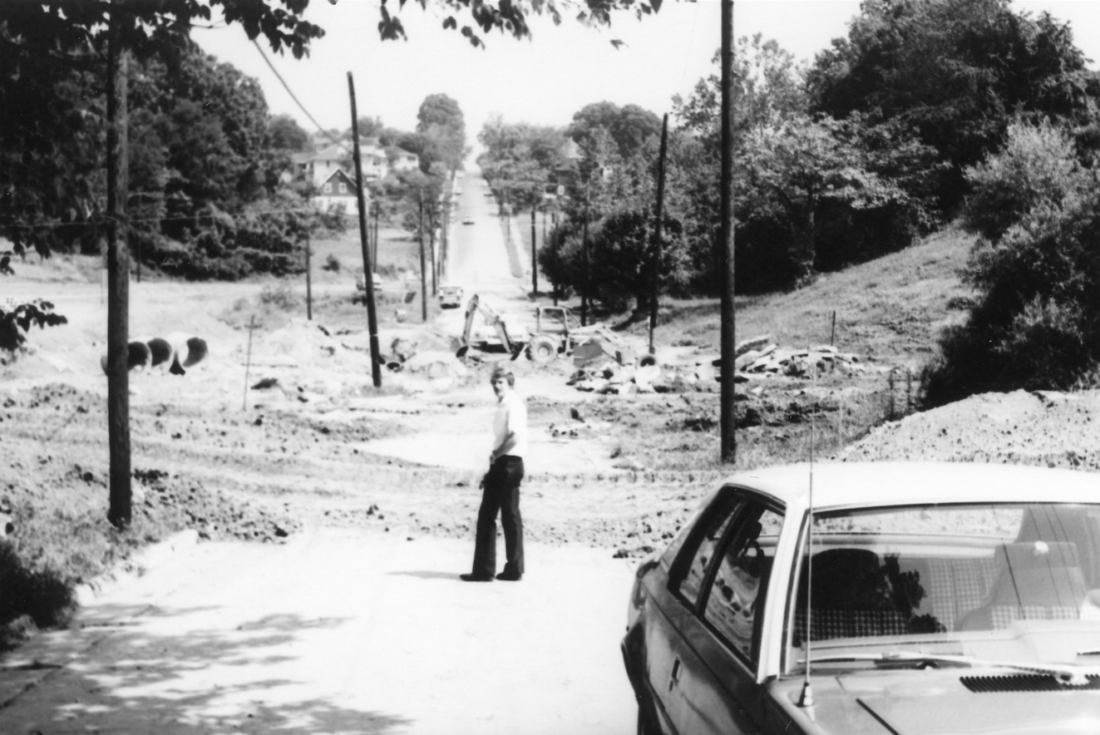This week’s column is an accompaniment to the news article, “Uprooted: Urban renewal in Asheville.”
On March 7, 1967, Asheville residents were set to vote on a $1.4 million bond that would cover the city’s portion of a $6.3 million federal grant to finance the East Riverside Urban Renewal project.
According to the paper, the impacted area was home to 4,000 residents, 96% of whom were African American. During its assessment of the neighborhood, the Redevelopment Commission of Asheville identified 1,275 structures; all but 65 were reported to have some type of structural deficiency. If the project were approved, 60% of these structures would be razed and replaced with new homes, as well as other public and private facilities. To finance the project, property taxes would be raised to a maximum of 7 cents per $100 in valuation.
On March 7, the city rejected the referendum in a vote of 4,964 to 6,108. “The effort to eliminate local slums must not stop because of Tuesday’s setback,” declared one editorial in The Asheville Citizen’s March 9, 1967, edition. “It must be reorganized … and revitalized.”
Others felt differently. On March 23, in a letter to the editor, resident Joan Hanlon continued to oppose the measure’s call for increased taxes, protesting any future referendum. “The Redevelopment Commission said that urban decay was a disease that will spread,” she wrote. “What do we do about communicable diseases? We have health laws — and enforce them — requiring quarantine or immunization. Why can’t we enforce our building and safety codes?”
Despite such objections, a second referendum was scheduled for Dec. 5. Four days before the vote, the paper emphasized to its readers that this was the city’s last chance to claim the $6.3 million federal grant. If rejected, the paper stressed, “it may be several years before Asheville could again obtain another UR allocation from the U.S. government.”
On the second go-around, voters approved the $1.6 million bond. Officials estimated the project would take six-eight years to complete.
Delays, disruptions and displacement distressed affected residents. On Dec. 1, 1972, the paper wrote:
“Mrs. Roy Rogers, a frequent critic of the East Riverside project, charged that ‘the Urban Renewal people’ have come in and torn down houses people wanted to fix up, torn sidewalks and streets, ‘and done everything in East Riverside but build homes for people, like they said they were going to do.’”
On July 2, 1978, the Sunday edition of the Asheville Citizen-Times reported that the undertaking was entering its final stage. By then, the original $6.4 million grant had ballooned into an $18.2 million project. The paper did not include information about subsequent funding sources. Instead, it focused on the latest additions to the neighborhood, including new roads, public housing, a junior high school, fire station and 50-acre park. In the process of building these new facilities, 482 families, 241 individuals and 66 businesses were relocated, and 757 structures were razed, the article stated.
Larry Holt, the Asheville Housing Authority’s urban renewal director, spoke with the paper that day. He noted that many homes had been saved and rehabilitated through low interest loans and grants. Amendments to the original plan, he added, allowed for future construction of 155 single-family homes (up from 15 in the original plan). At the time, 25 of these lots had been sold. Holt also reported that the organization’s relocation program provided replacement housing payments ranging from $5,000 to $15,000 for affected homeowners.
Though Holt considered the project a success, he said the city had learned a lesson. “We can no longer afford to let our housing fall apart,” he told the paper. “Once it deteriorates to a point where you can’t bring it up, your only recourse is to tear it down.”
Holt added: “We are working closely with the city through the code enforcement program and the Community Development program to see that no more total clearance urban renewal programs will be necessary.”
Editor’s note: Peculiarities of spelling and punctuation are preserved from the original documents.




Before you comment
The comments section is here to provide a platform for civil dialogue on the issues we face together as a local community. Xpress is committed to offering this platform for all voices, but when the tone of the discussion gets nasty or strays off topic, we believe many people choose not to participate. Xpress editors are determined to moderate comments to ensure a constructive interchange is maintained. All comments judged not to be in keeping with the spirit of civil discourse will be removed and repeat violators will be banned. See here for our terms of service. Thank you for being part of this effort to promote respectful discussion.